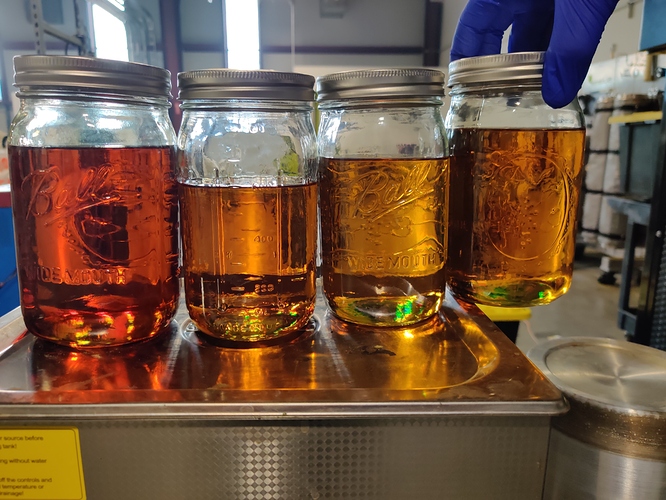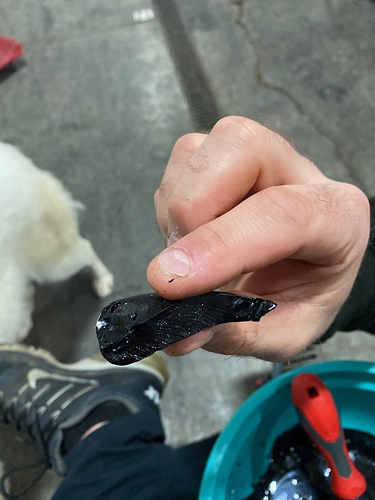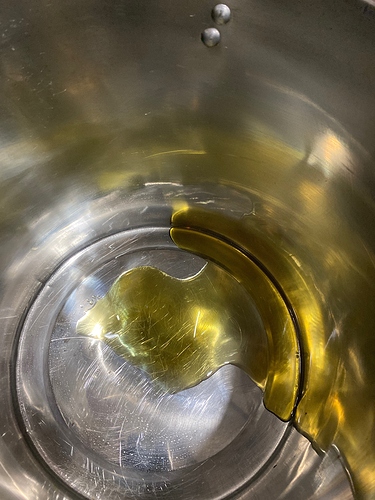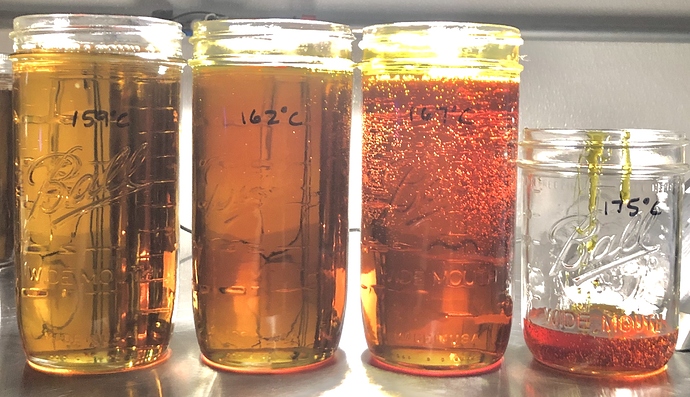So ive finally got my wiper working and have been doing testing with it alot through these lockdown times.
What ive found is not the norm, but i have more tools and toys then most people and work alone, meaning i dont look for jobs and dont have anything to prove by disproving others methods in order to get hired for either consulting or as a worker for someone else… no offense to people who work for other people… but dont try to discredit others to get a job especially with bullshit you may or may not know is true or not… but anyways… i dont have the overhead people do… i have only expectations of top quality… Literally no bulk. Nothing… just quality… so take that into consideration
I took my yhchem wiper, i added an extra feed heating section in the idea of a 3/8” stainless tube 12” long wrapped in heat tape with a pid attached. Im using dynalene 600 throughout the heat section so i can heat everything to the point of melting the wiper blades if i want. Im running a diffstak 160 and have an accurate gauge next to the column, my column has the port at the top which i prefer for these tests as it seems to be more accurate on removal of just heads. I can remove mains from the main column but it requires alot of heat… which is fine because ive been able to use some really high condenser temps.
The diffstak has another gauge on it showing me the health of the pump pressure after the trap. All tests were done beyond 0.75mtorr after the trap. Regardless of feed rate i was able to keep this.
I used two column jacket temps, 190C and 210C… primarily 210… as with the vac depths at the column of 80-120mtorr i should be seeing alot more then thc on the condenser… which at times i had… and found it was based on one specific parameter.
I have a coil condenser after the main column to, so a majority of the work is done by that, not the cold trap filled with dry ice and acetone. It runs at -20 to -15C depending on load work.
The dry ice does alot on the first pass. Which i have been decarbing/deterping/and deheading in one pass at 14L/hr currently. But for this we will talk about mains pass.
Lets talk about the process and length at which the material feeds through. Starting at 80-90C within the hopper, it feeds into a main heated line through a peristaltic pump. The heated line takes the material to 140C by the time it makes it through this. The material may or may not pop through this line like a rising film.
The next stainless tube is set to 180C. This brings the temp of the material to near the jacket temp before it has entered the main column of the system. You need to know your heat sensitive parts to attain this. I did this with stainless parts and am only unsure of the plastic cap supplied by beaker and wrench. Which is a very flimsy design for a wiper connection… should be a compression fitting to kf-25 or better. IMO… but i digress…
When the material enters the column, if it has been properly passed before hand it may pop a little initially but usually slides into the column and is wiper around. With a column temp of 210C there is a very obvious amount of distillate condensing above the basket and trying to roll down in, throughout the run. This is accentuated based on condenser temps of the column.
The main concept of this entire post is about what happens next. Since the entire system is stable, vac depth attained, material stability… very consistent temps, very consistent speeds. Wiper blade making little difference and seeming to matter the higher the flow. You can pull and extremely good fraction even at high jacket temps based solely on condenser temps. It seems to be the only temp that makes a difference if you rule out all other factors… vac depth, feed rate, jacket temp, input temp, wiper blade speed, etc…
Lower registry
The lower the condenser temp, the wider the band that comes off the material. Meaning, if you use 70C at these parameters (king of the crutch’s sop) you will get a very dark in volume fraction… probably holding alot more non desirables both above and below the boiling point of your cannabinoid fraction, essentially if you didnt do a good heads polish. But the volume removed will be more. So these types of passes are good for removing all the mains and tails away from tar fractions, for a pass like that. But ive found 100C to be just as appropriate for speeds as high as 7-10L per hour depending on the width and length of the wiper heat transferable range.
(Wiper heat transferable range meaning the area where the wiper blades meet the material, to where the material leaves at the bottom)
Upper Registry
So the next series of tests i did was the upper temp range of the condenser.
I ran the condenser temp up to 160C, i found that my removal of fractions from the residue was greatly reduced across all feed rates. In equal portions. But worse at higher speeds. Though! What i did learn was that the higher i went on condenser temp, the more near to only cannabinoids i got and the better the color in both volume and in small amount. I found that the higher the temp of the condenser, the more selective i could be. This is great for taking a first pass material, absent of all tar and making great water or yellow liters… and leaving behind the red fractions… the selectivity was amazing. I did not venture above 160C because i did not want to risk the plastic gl- whatever they are connectors on my yhchem. But they held well at that input temp at full circulator speed.
Heres how i imagine this is working.
We have two surfaces, imagine one is positive temp, and one is negative temp, just like a magnets, positive and negative. All the material that can vaporize off the positive temp, does. The negative side will draw from that only what bandwidth it can handle and allow the rest to move on. This happens the length of the column. So the bandwidth of possible fractions at the top vs the bottom is different. It has a 3 dimensional push and pull effect that looks alot like two christmas trees with one inverted and they overlap. (May be too much for some to visualize but you will eventually) regardless of visualization, there are two things learned here.
Increase the condenser temp, get a better color but need slower speeds to get (all of it)
You have increased the top upside down christmas tree
Decrease the condenser temp and you increase the likelyhood of undesirable tails colored bodies, unless you flood the system more, giving more of the material to be possibly condensed, like a buffer that holds back the tails. You have increased the rate of the bottom xmas tree because the amount of bandwidth left at the bottom is substantial enough that tails may not appear.
I like 3 passes on the wiper, i havent noticed degredations at these temps… mainly because having material see 210C for maybe 2 minutes vs an spd at 4-12hrs… big difference. I love my spds and i wont ever stop working with them. But i also am not prejudice in this industry because all science is interesting to me.
The three passes
-
Decarb/deterp/deheads in one pass… vac will be what you base this out of and the condenser/jacket are set to maximum, to keep heads out of the main column. Take both sides, add them back together and do second pass.
-
Second pass removes mains and tails from tar at diff pump vac depths. Jacket max, condenser at 60-120C depending on flow rate, and size of system.
-
Final pass. Based on feed rate and knowledge of the wiper, jacket max, feed rate and condenser to match known outcomes. But i prefer 2-4L/hr with condenser between 130-160C irrespectively. Both mains passes should have extremely stable vac depths.
Every wiper is different, but rule out all of your settings and rely on one to give you change. I only change wiper blade speed to compete with any flooding from feed rate. Once its reset, i then go back and reset condenser to Adjust for the expected color and outcome.
I believe @densone has some info to corroborate on my theory.
There is more to come on this concept, like pics and videos



